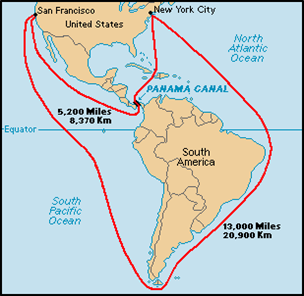


FERDINAND DE LESSEPS 1805
-
(G3, G4, W4, Va, Vb, Vc)
Acknowledgements
De Lesseps: by the
French artist Henri Meyer (1844-
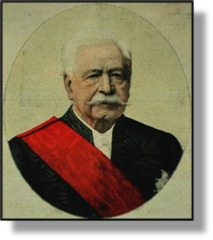 xxxxxThe French diplomat and entrepreneur Ferdinand de
Lesseps was born at Versailles into a family with a long and
distinguished history in government service. After some years in
Italy, where his father was serving as a diplomat, he attended the
College of Henry IV in Paris and then worked as a civilian in the
army department. In 1825 he entered the diplomatic service, and
over the next twenty four years served in a variety of overseas
locations, including Lisbon, Tunis, Alexandria, Cairo, Rotterdam,
Barcelona and Madrid. He rose to senior status in the consulate
service, but in 1849 his failure to negotiate the return of the
Pope to the Vatican -
xxxxxThe French diplomat and entrepreneur Ferdinand de
Lesseps was born at Versailles into a family with a long and
distinguished history in government service. After some years in
Italy, where his father was serving as a diplomat, he attended the
College of Henry IV in Paris and then worked as a civilian in the
army department. In 1825 he entered the diplomatic service, and
over the next twenty four years served in a variety of overseas
locations, including Lisbon, Tunis, Alexandria, Cairo, Rotterdam,
Barcelona and Madrid. He rose to senior status in the consulate
service, but in 1849 his failure to negotiate the return of the
Pope to the Vatican -
xxxxxIn fact his
forced retirement worked to his advantage. He had long cherished
the idea of constructing a canal across the Isthmus of Suez,
thereby linking the Mediterranean and Red Seas and opening up a shortcut to the Far East
(see map below). As early as the mid 1830s, while serving in
Egypt, he had studied a plan for such a canal, put forward by one
of Napoleon’s chief engineers. And for this reason he had
cultivated a friendship with Said Pasha, the son of the Muhammad
Ali, Turkish viceroy (or khedive) of Egypt at that time. Thus In
1854, when his friend Said Pasha was promoted to 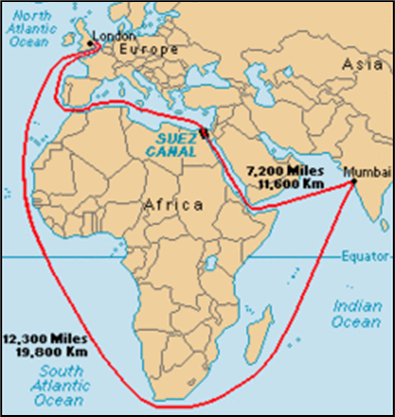 viceroy,
he seized his opportunity and put forward his idea. As
anticipated, he received the new khedive’s full support for such a
scheme. Without delay he formed an international company to
oversee the work and, with the assistance of two prominent
surveyors, came up with a detailed plan. This was adopted with
only slight modifications by an international commission of
engineers in 1856, and the surveying began.
viceroy,
he seized his opportunity and put forward his idea. As
anticipated, he received the new khedive’s full support for such a
scheme. Without delay he formed an international company to
oversee the work and, with the assistance of two prominent
surveyors, came up with a detailed plan. This was adopted with
only slight modifications by an international commission of
engineers in 1856, and the surveying began.
xxxxxAs we have seen, the actual construction of the Suez Canal commenced in 1859 (Va), and was completed ten years later. The success of this project was due in large measure to the enthusiasm and the superb organising ability of de Lesseps. He played the major part in raising the money and persuading the French government to meet more than half the capital cost. His accomplishment was universally recognised, numerous honours were showered upon him, and in France he was fêted as a national hero. However, his image at home became somewhat tarnished in 1875 when, with his assistance, the British prime minister, Benjamin Disraeli, succeeded in snapping up all of the khedive’s shares in the canal, thereby gaining for Britain a controlling interest in this vital waterway.
xxxxxThe building of the Panama Canal to link the Atlantic and Pacific Oceans in Central America was to be his next major challenge, and one which, this time, he failed to meet. When, in 1879, the International Congress of Geographical Sciences met in Paris and voted in favour of building such a canal, it is hardly surprising that they should call upon de Lesseps, the man who had successfully built the Suez Canal, to oversee the project. He was appointed president of the French company assigned to the task, and after the surveying was completed, work began in 1881.
xxxxxThe idea of
cutting a waterway through the Isthmus of Panama, thereby avoiding
a long sea voyage around the southern tip of South America, was
not a new idea. Interest in making this short-
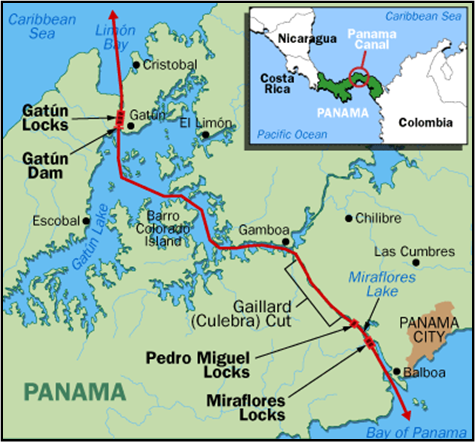 xxxxxInitially de Lesseps proposed a sea-
xxxxxInitially de Lesseps proposed a sea-
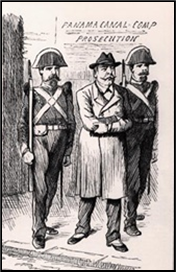 xxxxxThere then followed what came to be known as the
Panama Canal Scandal. In 1892 an official enquiry into the
direction of the company’s affairs found de Lesseps and his son
Charles guilty of mismanagement and misappropriation of the
company’s funds, and accused some 150 French deputés of receiving
bribes in return for supporting government funds for the project.
De Lesseps and his son were found guilty and sentenced to
imprisonment for five years, but a few months later an appeals
court reversed the decision. The government survived the scandal,
but the following year there were big socialist gains. The cartoon
from the London satirical magazine Punch (November
1892) reads: “The Great Frenchman”.
xxxxxThere then followed what came to be known as the
Panama Canal Scandal. In 1892 an official enquiry into the
direction of the company’s affairs found de Lesseps and his son
Charles guilty of mismanagement and misappropriation of the
company’s funds, and accused some 150 French deputés of receiving
bribes in return for supporting government funds for the project.
De Lesseps and his son were found guilty and sentenced to
imprisonment for five years, but a few months later an appeals
court reversed the decision. The government survived the scandal,
but the following year there were big socialist gains. The cartoon
from the London satirical magazine Punch (November
1892) reads: “The Great Frenchman”.
xxxxxDe Lesseps was elected a member of the Académie Française in 1884, and awarded the Grand Croix de la Légion d’Honneur. He received many honours from overseas. He was presented with the Star of India, and received the freedom of the City of London. In 1886 he travelled to the United States to speak at the dedication of the Statue of Liberty. Despite the scandal that surrounded the last years of his life, his reputation has remained high in France and abroad. He died at his Château de la Chesnaye in Central France, and after a national funeral, was buried in Père Lachaise Cemetery in Paris.
xxxxxIn 1902 the United States bought out the assets of the French company, and the following year, by agreement with the Republic of Panama, secured a perpetual lease on the “Canal Zone, a strip five miles wide on each side of the waterway. Work was begun on a lock canal in 1906, and by clearing the area of mosquitoes (found to be the cause of malaria and yellow fever); employing a labour force of some 40,000; and using more efficient equipment, the canal was opened in the summer of 1914. By a further treaty between the United Sates and Panama in 1977, Panama took over full control of the Canal Zone in 2000.
xxxxxIncidentally, in November 1899 a monumental statue of Ferdinand de Lesseps was erected at the entrance to the Suez Canal. It was demolished by the leader of Egypt, President Gamal Nasser, when he took over the canal in 1956, but was later restored by the Friends of Ferdinand de Lesseps and now stands in a small garden at the Port Fouad shipyard. ……
xxxx…… In 1887 the French painter Paul Gauguin, one-
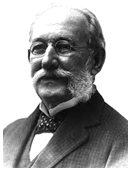
Xxxx…… Thexvirtual eradication of
yellow fever and malaria during the American building of the
Panama Canal was largely due to the findings of the Cuban
physician Carlos Finlay (1833-
 xxxxx…… Anotherxman who made a close study of the mosquito at this
time was the British physician and
bacteriologist Ronald Ross
(1857-
xxxxx…… Anotherxman who made a close study of the mosquito at this
time was the British physician and
bacteriologist Ronald Ross
(1857-
xxxxx……xThe Panama Canal, when
completed in 1914, shortened the trip from the Atlantic to the
Pacific by some 7,000 miles. It is 40 miles long (64ks), with a
maximum width of 300 ft (91m) and a minimum depth of 41 ft (12m).
It has six pairs of locks -
xxxxx……xThe port of Vancouver on the west coast of Canada benefited greatly from the opening of the Panama Canal. It became economically viable to export grain and timber to the American east coast and Europe, and by the 1930s it had become Canada’s major port on the Pacific coast, and the country’s third largest city.
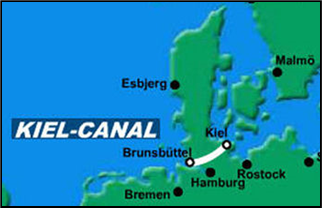 xxxxxAnother important waterway built at this time was the
Kiel Canal, which
crosses the German state of Schleswig-
xxxxxAnother important waterway built at this time was the
Kiel Canal, which
crosses the German state of Schleswig-
xxxxxIncidentally, an earlier waterway -
Including:
The Panama Canal
and The Kiel Canal

Vc-
xxxxxThe
Frenchman Ferdinand de Lesseps served as a diplomat for many
years, but when he retired in 1849 he set out to fulfil his
ambition -




